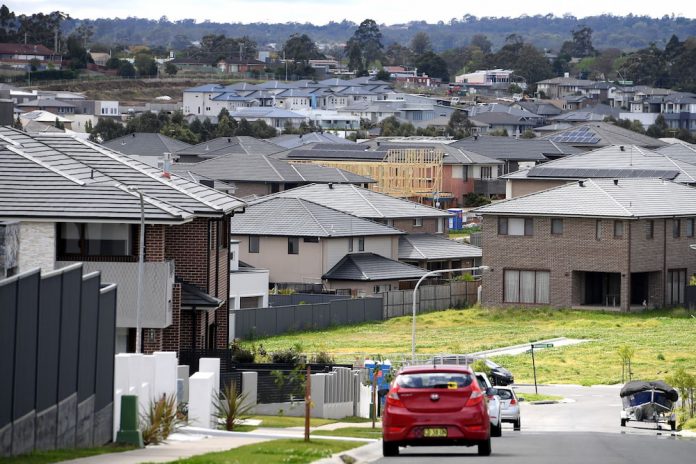Australians appear to be giving up on the dream of owning their first home at a time when house prices have risen by more than 20 per cent in the past year – the biggest increase since mid-1989.
New figures show demand for home loans from first time buyers sank for a seventh straight month, falling three per cent in August to stand 2.1 per cent lower than a year earlier – the first annual decline in two years.
Separate data released on Friday also suggests worsening affordability is putting the brakes on house price growth.
While the CoreLogic national home value index rose by a further 1.5 per cent in September, it is just over half the rate struck in March.
CoreLogic’s research director Tim Lawless believes the slowing growth conditions are the result of higher barriers to entry for non-home owners along with fewer government incentives to enter the market.
“With housing values rising substantially faster than household incomes, raising a deposit has become more challenging for most cohorts of the market, especially first home buyers,” Mr Lawless said.
With the median house price in Sydney now over $1 million, a buyer would have to raise at least $200,000 for a 20 per cent deposit.
Sydney prices have risen by 26.5 per cent in the past year, but the biggest annual gains among capital cities has been in Hobart, up 32.5 per cent, and Canberra, rising 29 per cent.
Overall, the Australian Bureau of Statistics said mortgage lending fell by 4.3 per cent in August, led by a 6.6 per cent drop among owner-occupiers, the biggest fall since May 2020.
Owner-occupier loans were still 34 per cent higher than a year earlier.
In contrast, investor housing loans rose 1.5 per cent in the month to be a huge 92 per cent higher than a year earlier.
The figures come in a week when the Council of Financial Regulators flagged a warning that while lending standards have not deteriorated, it is worried about debt-laden households putting the economy at risk in the future.
“We retain the view that Australian regulators are becoming increasingly uncomfortable with housing market dynamics and we expect the APRA (Australian Prudential Regulation Authority) to announce further macro-prudential measures in the coming quarters,” JP Morgan economist Tom Kennedy said.
Meanwhile, Australia’s manufacturing sector was barely growing in September as border closures and coronavirus lockdowns continued to stifle activity.
The Australian Industry Group’s performance of manufacturing index eased 0.4 points to 51.2, just holding above the 50 level which separates growth in the sector from contraction.
Ai Group chief executive Innes Willox said the solid recovery from late 2020 had all-but-stalled due to lockdowns in the nation’s two largest states, NSW and Victoria.
“While sales and employment were both lower in September, there are bright spots on the horizon with new orders continuing to expand and production and finished stocks both rising at a faster pace than in August,” Mr Willox said.
“Manufacturers are hoping that the prospect of restrictions being wound back will see a strong lift in performance over coming months.”
AAP
Get all the latest Newcastle news, sport, entertainment, lifestyle, competitions and more delivered straight to your inbox with the Newcastle Weekly Daily Newsletter. Sign up here.







